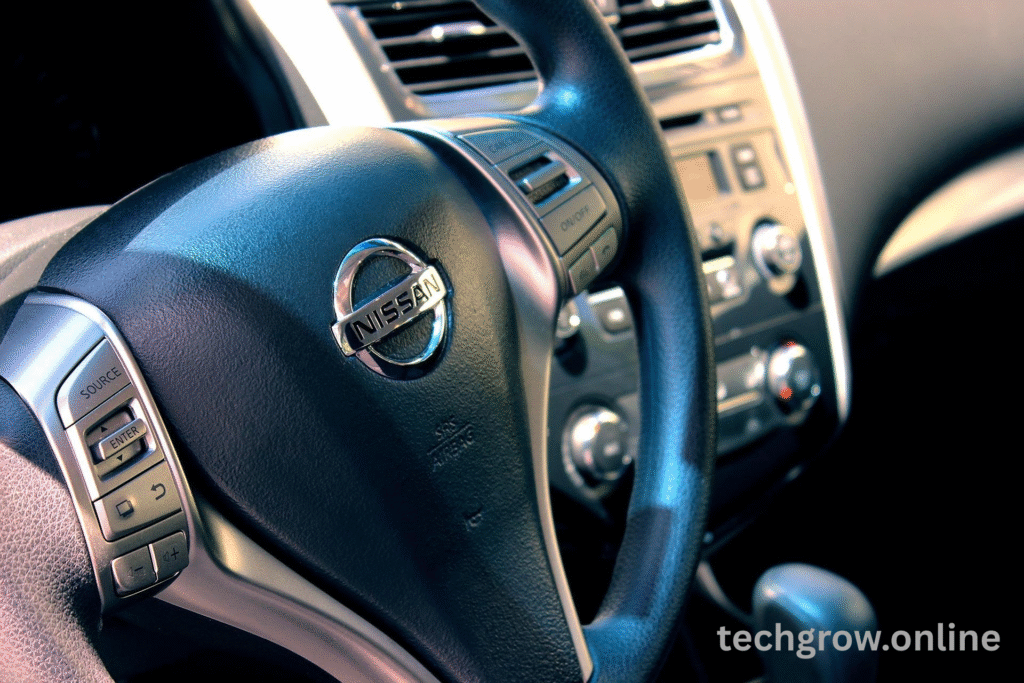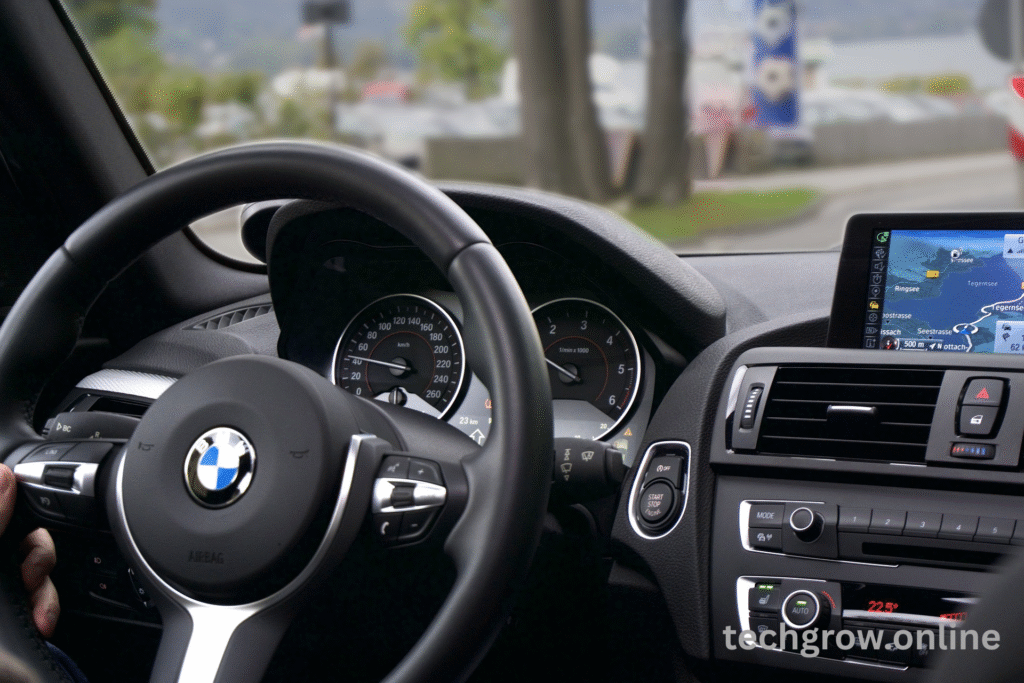Revolutionary Car Technologies in 2025
Revolutionary car technologies are redefining the automotive landscape in 2025. With innovations spanning electric propulsion, autonomous systems, high-performance connectivity, and sustainable materials, the driving experience is being transformed. These breakthroughs are reshaping global standards for performance, safety, and environmental stewardship.

1. Electric Vehicles (EVs): Speeding the Way Towards a Greener Future
Electric cars have gone mainstream, thanks to recent breakthroughs in charging and batteries. Industry leaders like NIO and Aptera are at the forefront of this revolution:
-
NIO’s Advances:
NIO has pioneered battery-swapping technology, allowing drivers to swap out spent batteries in minutes at over 3,000 charging stations across China and Europe. Their electric vehicles achieve ranges of more than 650 miles, outperforming most competitors. -
Aptera’s Solar EV:
Aptera’s innovative solar electric car integrates solar panels into an aerodynamic body, providing up to 40 miles of daily range from sunlight. Its lightweight frame and efficient powertrain make it one of the most energy-efficient vehicles on the road.
These advancements in EV technology not only reduce emissions but also enhance range, convenience, and affordability, helping accelerate the global shift towards sustainable transportation.

2. Autonomous Driving: Navigating the Road Ahead
Autonomous driving technology has made significant progress, with many manufacturers reaching Level 3 autonomy and working toward Level 4:
-
NIO ET9:
The NIO ET9 features a 900V electric architecture and advanced driver-assistance systems, offering semi-autonomous functionality that improves safety and reduces driver fatigue. -
Sony Vision-S:
Sony’s Vision-S platform incorporates 40 sensors, including cameras, radars, and lidars. These work together in a “Safety Cocoon” system aimed at achieving Level 4 autonomy via over-the-air updates.
These revolutionary car technologies are transforming vehicle control, safety, and efficiency, paving the road for fully autonomous transportation systems in the near future.
3. Connected Cars: The Internet of Vehicles
Modern vehicles are becoming highly connected, enhancing both functionality and the user experience:
-
Google Gemini in Volvo:
Volvo is partnering with Google to integrate Gemini conversational AI into its vehicles, starting with the EX90. This allows natural voice interaction for navigation and system controls. -
5G Integration:
With 5G technology, connected cars can access real-time traffic data, stream media, and receive over-the-air updates, keeping vehicle software current with the latest features and security protocols.
The integration of connectivity is elevating the driving experience, making cars smarter, safer, and more interactive.
4. Sustainable Materials and Manufacturing
Sustainability is a top priority in revolutionary car technologies. Automakers are incorporating eco-friendly materials and efficient manufacturing processes:
-
Mercedes-Benz Vision EQXX:
This concept car features bamboo fiber carpets and mycelium-based leather alternatives, with an emphasis on aerodynamic efficiency and minimal weight. It delivers a range of over 620 miles. -
3D Printing:
Companies like Divergent are utilizing 3D printing to create strong yet lightweight components, reducing material waste and production costs.
These initiatives help reduce the carbon footprint of vehicle manufacturing and align with global sustainability goals.
5. Advanced Driver-Assistance Systems (ADAS)
ADAS technologies are making driving more comfortable and secure:
-
Nissan’s ProPilot Assist:
This feature enables Level 3 autonomy, handling lane changes, highway cruising, and parking with minimal driver input. -
BMW’s Automated Parking:
BMW’s self-parking systems assist with maneuvering into tight urban spaces, reducing the stress of city driving.
These systems are vital in reducing accidents, driver fatigue, and enhancing road safety.
6. Artificial Intelligence and Predictive Maintenance
AI is playing a crucial role in revolutionizing vehicle maintenance:
-
GM’s OnStar:
This AI-powered system offers real-time diagnostics, warning drivers of potential issues and recommending service schedules, helping reduce breakdowns and repair costs. -
Ford and BMW:
Both manufacturers are adopting AI-based diagnostics to monitor wear and tear, improving vehicle longevity and reliability.
With predictive capabilities, AI ensures optimal performance and maintenance, lowering costs over the vehicle’s lifetime.
7. Augmented Reality (AR) Dashboards
AR is transforming how drivers interact with their vehicles:
-
Hyundai’s Holographic Windshield:
This futuristic feature projects navigation and safety data onto the windshield, reducing the need to look away from the road. -
Mercedes-Benz and Hyundai:
Both brands are developing AR-capable head-up displays (HUDs), superimposing key information within the driver’s natural line of sight.
AR dashboards increase situational awareness and reduce distractions, improving overall road safety.
8. Biometric Access and Personalization
Biometric technology is enhancing security and user customization:
-
Hyundai Genesis GV60:
This model includes facial and fingerprint recognition, allowing keyless entry and personalized settings like climate and seat position. -
Tesla and BMW:
Both automakers are exploring biometric authentication for access and in-car personalization, ensuring safety while improving convenience.
Biometric systems are the future of secure, personalized vehicle access.
9. Vehicle-to-Everything (V2X) Communication
V2X communication allows cars to connect with everything in their environment:
-
Ford and GM:
These automakers are leading the way with V2X systems that enable real-time data sharing between vehicles, traffic lights, infrastructure, and even pedestrians. -
Real-Time Hazard Detection:
Vehicles can detect traffic conditions, road hazards, and accidents early, allowing drivers to respond proactively and avoid danger.
This technology is central to the future of smart cities and intelligent traffic systems.
10. Ultra-Fast Charging and Battery Breakthroughs
Fast charging solutions are solving range anxiety and increasing EV convenience:
-
Tesla V4 Superchargers:
These can deliver over 350kW, charging a battery to 75% in less than 10 minutes, vastly reducing downtime. -
Ionity Network Expansion:
Ionity is rolling out high-speed chargers across Europe, supporting long-distance travel for electric cars.
With faster charging and better batteries, EV adoption continues to grow at an unprecedented pace.
11. Airless Tires and Self-Healing Materials
Revolutionary materials are reducing maintenance and improving durability:
-
Michelin’s Airless Tires:
Airless tires eliminate puncture risks, delivering consistent performance and reducing environmental waste. -
Self-Healing Materials:
Future vehicles may include coatings that repair minor scratches or dents, reducing cosmetic wear and saving on bodywork costs.
These innovations enhance the lifespan and reliability of vehicles while lowering ownership costs.
12. Flying Cars and Air Taxis
While still in development, flying vehicles are approaching commercial viability:
-
Urban Air Mobility:
Companies like Uber and Hyundai are working on VTOL (Vertical Take-Off and Landing) vehicles, targeting urban congestion with plans for deployment as early as 2030.
Flying cars and air taxis represent the next frontier in personal and public transport.
Conclusion
In 2025, revolutionary car technologies are reshaping the way we drive, interact with vehicles, and think about mobility. From electric propulsion and autonomy to connectivity, sustainability, and even urban air travel, these innovations are transforming the global auto industry.
As automakers and tech companies continue to push the boundaries of what’s possible, we are moving toward a future of smarter, safer, and greener transportation. Embracing these technologies is not just about innovation—it’s about building a better world for generations to come.
